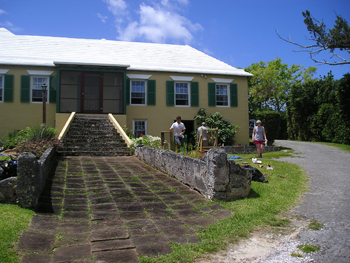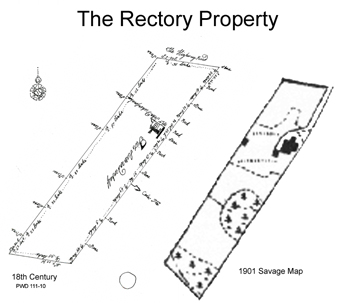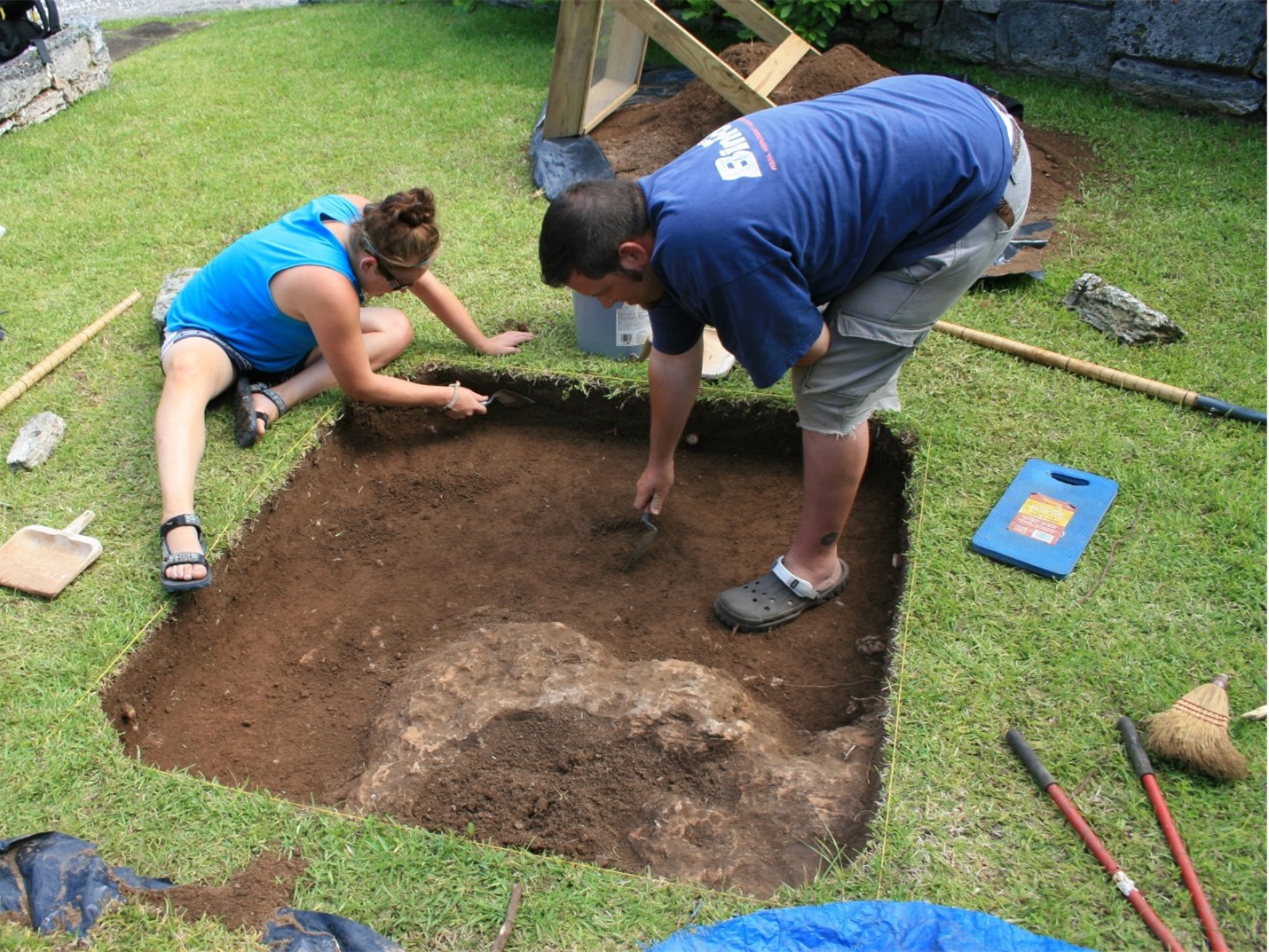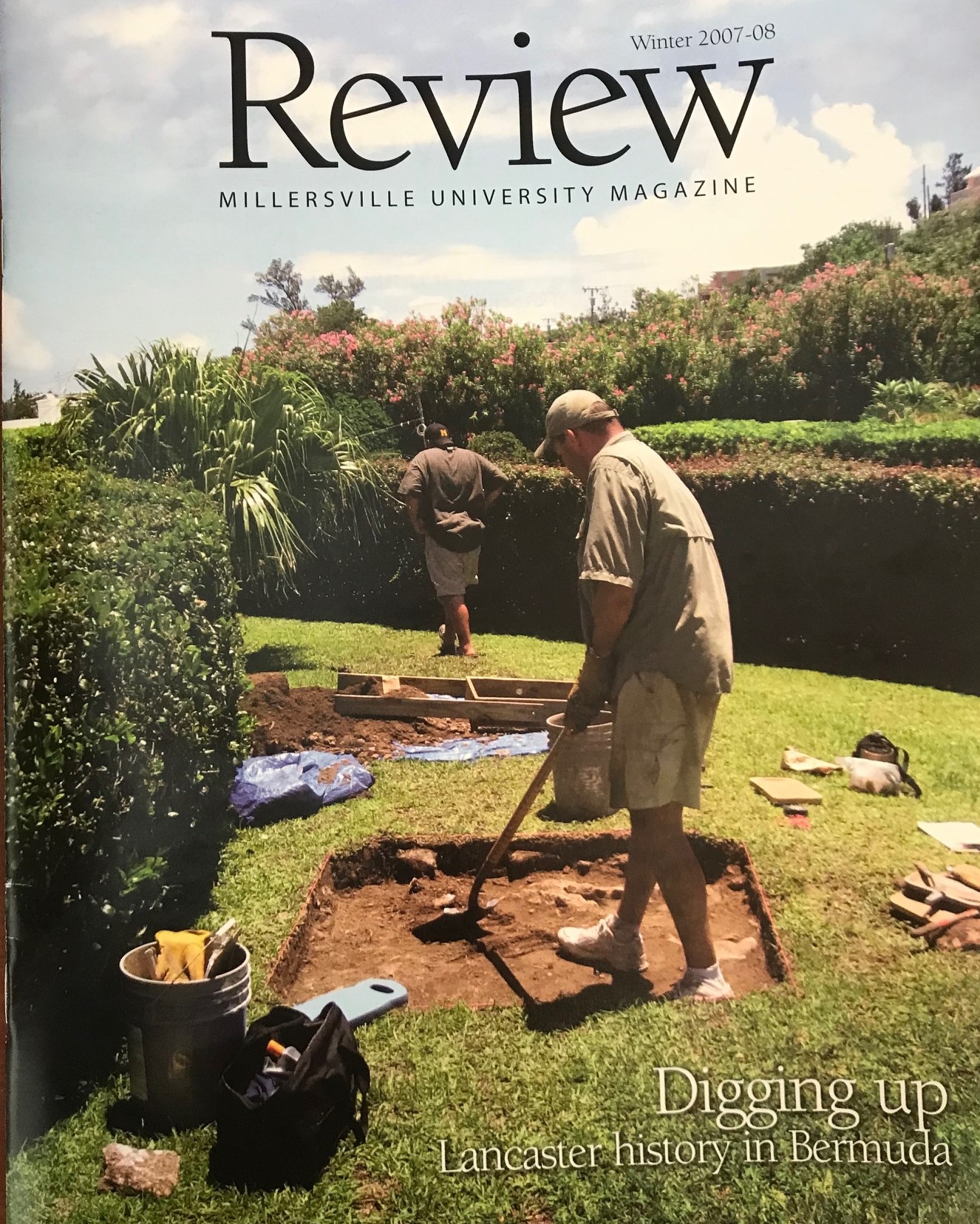Atlantic World Research
The Rectory
 |
| The Millersville Crew excavating in front of the Rectory. |
The Rectory was the second site tested by the Millersville University Atlantic World Project during the Summer of 2007. Of the three properties excavated in Southampton, the Rectory is the only property that does not border on the ocean. It is however located a mere stones throw from Franks Bay and touches on the original eastern border of Norwood Share #27. The reasons that this property was investigated were two-fold. Firstly based on all available information, including a 1789 land survey and an 18th century Surveyor General Map from the Public Works Department 111, it was determined that the rectory was owned by John Dickinson. As John Dickinson was a ship captain working with the John Stamper and the Stedmans in Philadelphia excavating his property in Bermuda provides the potential for discovering physical evidence of a link between Elizabeth Furnace in Pennsylvania and smuggling in Bermuda. As there were two, perhaps three, living John Dickinsons alive during our period of interest we were forced to dig both the Dickinson Store and the Rectory to make sure we dug the site of the most relevant John Dickinson. The second reason was simply that the Bermudian architecture of the standing Rectory exhibits distinctly 18th century features and is located exactly where it is placed on the 18th Surveyor General map. Thus we know that the building itself is of the appropriate age and ownership to have been ripe for providing archaeological data that met our research criteria.
 |
| A plot of land on belonging to John Dickinson as shown on Public Works Department map 111-10, circa 18th century. (Left) The Rectory Tract as surveyed on the Savage Map in 1901. (Right) |
The hope for the Rectory Site was high, given its definitive attribution and connection to our Pennsylvania research. Three 5x5 test units were opened in the lawn on the North Side of the house. One unit was placed in front of the entrance to a walk in basement, in the hopes of finding evidence of storage of trade goods or slaves. Unfortunately, the deposition in the lawn area was quite thin, and no discernable stratigraphy was present, which was consistent with the mixed context of artifacts discovered. Ceramics and pipestems dating to the late 17th were found in the same layer as plastics, indicating that the area had been heavily disturbed. Thus testing in the front yard was concluded in only two days.

After the disappointment in the front yard, new units were opened in the rear lawn of the house and the garden area to the south. Three two by two units were dug in the rear lawn. The deposition in the rear of the house was considerably deeper, but the stratigraphy was not. All three units proved to be either largely sterile or too disturbed to warrant further testing in that area. The units in the back garden did find some intact stratigraphy and archaeological deposits, however, these deposits all dated to the 19th well after our period of interest. Having exhausted our test areas and founding nothing noteworthy we concluded testing, having identified no areas of archaeological potential for our research.
Our work was the cover feature in the Millersville Review the following winter.
